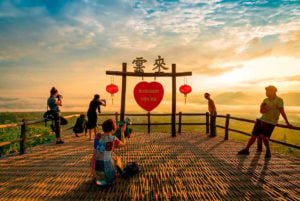9 Most Undiscovered Places of Mae Wang (2025)
Situated in the heart of Chiang Mai province in northern Thailand, Mae Wang is a vibrant district brimming with rich cultural diversity and stunning natural beauty. The bustling town of Ban Kad serves as both its largest settlement and administrative hub, while still maintaining close ties to the nearby city of Chiang Mai.

What sets Mae Wang apart from other regions in Thailand is the strong presence of ethnic Hill Tribe communities, whose unique customs and traditions create a colorful tapestry of cultural experiences for visitors to explore. From lush landscapes to immersive encounters with local tribes, Mae Wang offers a truly unforgettable experience for those looking to uncover the lesser-known gems of Thailand.
Mae Wang (Thai: แม่วาง, mâe-waang) loop leads the traveler through the beautiful Mae Wang River Valley located in the national park of the same name. The journey begins in San Pa Tong, which is about 18 km from Chiang Mai and easily accessible by road. The Mae Wang Loop is one of those loops in Northern Thailand that gives the traveler an authentic Thai view of the world and an insight into the local people’s way of life.
It will be delightful for travelers who plan to take this loop by motorcycle or car because there are well-paved roads along the route. The Mae Wang Loop is slightly longer than the Samoeng Loop and passes through landmarks of importance to Thai heritage and culture.
This route offers many breathtaking views along the way and passes through many small towns and villages, leaving the traveler with a lasting impression of Thai identity.
Mae Wang Loop also takes the traveler through Mae Wang National Park, beautiful temples, elephant camps, wildlife sanctuaries, and many other interesting stops along the way. Here are a few places that are must-visits on this route!
Features of MaeWang district
As a seasoned traveler, you approach Mae Wang District with a discerning eye, ready to delve beyond the typical tourist paths. Located in the serene province of Chiang Mai, Thailand, Mae Wang offers an authentic slice of Thai culture and natural beauty, a perfect blend for the experienced wanderer seeking depth and authenticity in their journeys.
Your adventure begins in the heart of Mae Wang. The bustling town center, a mosaic of local life, provides an immediate immersion into traditional Thai culture. Here, the morning markets are a treasure trove for the senses. You expertly navigate through stalls overflowing with fresh produce, local crafts, and vibrant textiles, each item telling its own story. The aroma of street food tempts you to sample local delicacies, an unmissable opportunity to engage with the culinary heartbeat of the region.
The Mae Wang River, a centerpiece of the district, is your next call. As a pro traveler, you’re not just looking for a picturesque backdrop, but an experience that connects you with the environment. Opting for a bamboo raft, you find a meditative peace as you float downstream, each gentle paddle stroke bringing you closer to nature’s rhythms. For an adrenaline surge, you might challenge the river’s whitewater rapids, combining thrill with the raw beauty of the surrounding forests.
A visit to an ethical elephant sanctuary in Mae Wang is more than just an encounter; it’s an educational experience. You engage deeply, learning about elephant conservation, their role in Thai culture, and the importance of ethical treatment. Walking alongside these gentle giants, you gain insights that only come from close and respectful interaction.
The district’s trails call to your adventurous spirit. Equipped with sturdy boots and a keen sense of curiosity, you venture into the jungle, discovering trails that lead to cascading waterfalls and hidden pools. These are moments of solitude and reflection, a chance to connect with nature away from the bustle of more crowded destinations.
Your pro traveler instinct draws you to the local hill tribes, such as the Karen and Hmong communities. These visits aren’t just about observing but engaging, learning about their traditions, crafts, and way of life. You respect and appreciate the simplicity and sustainability of their lifestyles, gaining insights that go beyond the usual tourist experience.
Accommodations in Mae Wang are chosen not just for comfort but for authenticity. You might stay in a rustic homestay, embracing the local way of life, or an eco-friendly resort that aligns with your values of sustainable travel.
As you depart Mae Wang, your journey leaves you with more than just memories. You’ve gained a profound understanding of the intricate balance between culture, history, and nature. For you, Mae Wang wasn’t just a destination; it was a chapter in your ongoing journey of exploration and discovery, a testament to the depth and richness that travel can offer when approached with curiosity and respect.
Things To Do
Mae Wang National Park
Most roads around the Mae Wang Loop border pass through Mae Vang National Park. The national park covers the areas of Pa Mae Cham, Pa Mae Khan Mae Vang, and Pa Chom Thong, about 700 square kilometers.
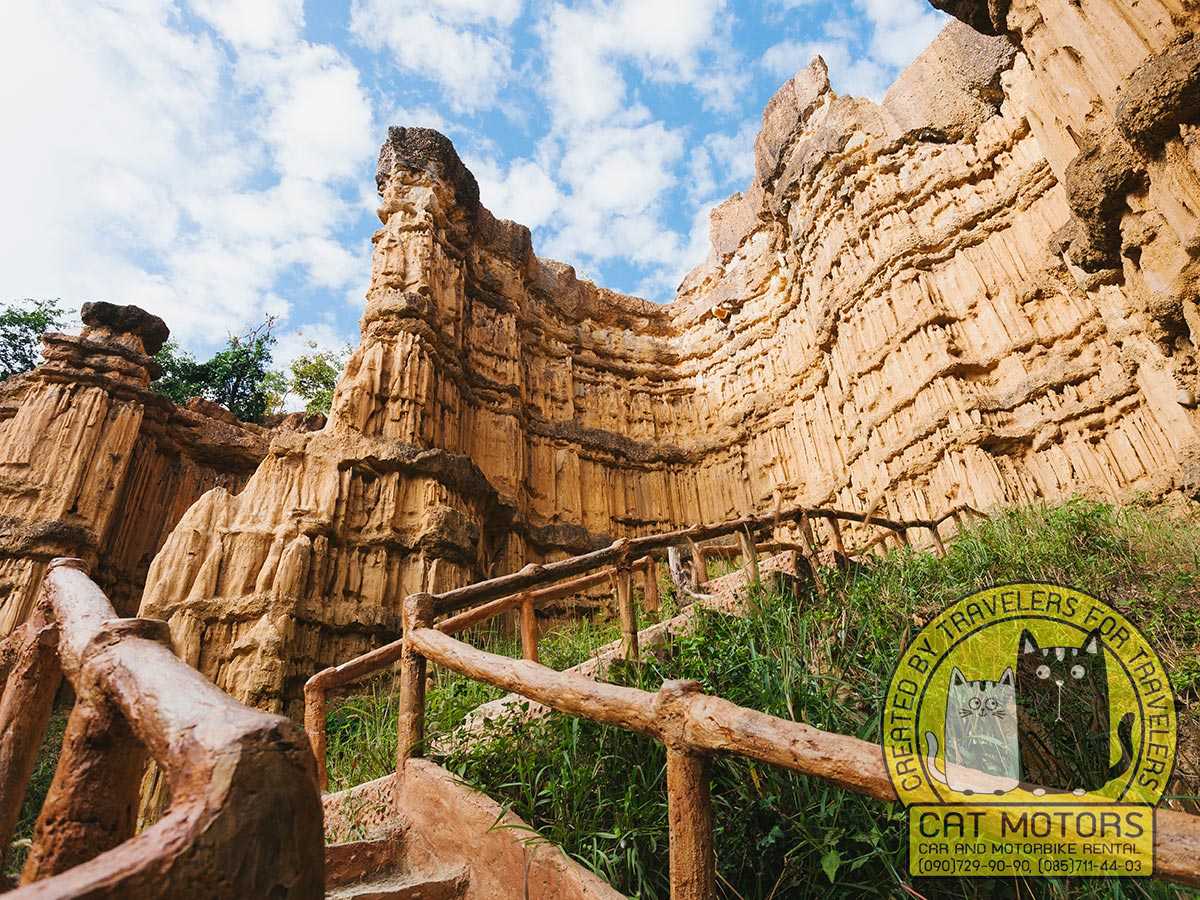
In general, the topography of the national park is quite mountainous and rocky, with several large valleys. In addition, there are many waterfalls and rock formations that give it even more grandeur.
A unique feature of Mae Wang National Park is that there are five different forest types:
- Mixed deciduous forest
- Dry dipterocarp forest
- Mixed dry dipterocarp forest
- Mountain evergreen forest
- Mountain pine forest
The difference between these different forest types can be seen in some places with the naked eye. It is also home to much Thai wildlife, so it is advisable to consult a local resident or guide before venturing into the forest and jungle on your own.
Pha сhor Viewpoint
Be sure to visit the Pha Сhor viewpoint, which offers amazing views of the surroundings.
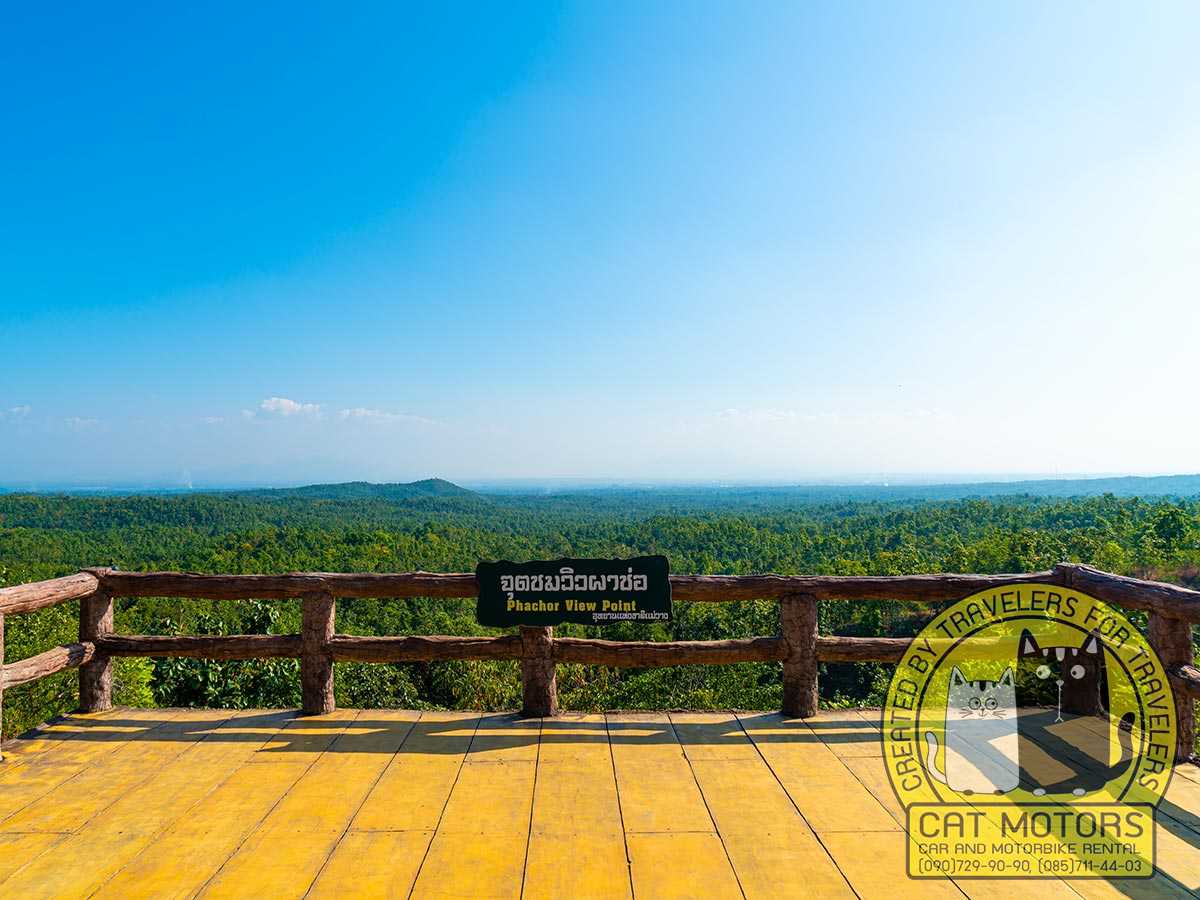
Khun Wang Royal Project
Khun Wang is a popular tourist spot among foreign and local tourists because it is famous for its cherry blossoms. Contrary to popular belief, sakura grows not only in Japan but also in Thailand. When in full bloom, which can be seen in these places, these vicinity views are unparalleled as their scenic beauty and appearance are striking. The best time to visit this place is from late December to early February when the wild Himalayan cherry blossoms are at their most lush.

In 2022, white sakura trees bloomed here for the first time in Thailand, thousands of which were planted 5-6 years ago as part of the Royal Conservation Project for local nature.
It is also home to an agricultural research center. Chiang Mai Royal Agricultural Research Center Khun Wang is not only a tourist spot and home to the cherry blossom trees that everyone loves. It is also an agricultural research area where scientists are working to offer local farmers an alternative to the conventional opium plantations actively cultivated in these areas decades ago. The research covers crop life extension, product quality, new varieties, etc.
The pink cherry blossoms are generally thought to be the work of the Japanese, but this is not the case. Sakura trees grow and grow naturally in most Asian countries. The Khun Wang Royal Project area is one of those places where the cherry blossoms bloom in abundance, leaving travelers with a pleasant sight they won’t be able to forget.
On a trip through the Mae Wang Loop, the Khun Wang Royal Project is a place everyone should visit.
Did you know that Doi Inthanon is the tallest mountain in Thailand with occasional snowfall?
Mae Sapok
Mae Sapok Falls is a small but beautiful waterfall deep in Mae Wang National Park. It is an adventure to get there. Although many people prefer to reach the falls by car, many ride bicycles or motorcycles to cover most of the distance and then walk to the foot of the falls.

On the way to Mae Sapok Falls is the iconic wooden bridge. This bridge is a trendy spot for Instagram photos and adds to the aesthetics of the waterfall and this route. There is also a small temple, Wat Mae Sapok, on the way to the waterfall. Wat Mae Sapok is less visited than other famous Buddhist sites in Northern Thailand, but what it lacks in popularity, it makes up for in tranquility and beauty.
Mae Sapok Falls is a great place to kick off your boots and relax. The many pools around the waterfall are great places to swim and cool off.
Mae Wang Waterfall
Mae Wang Falls is part of Mae Wang National Park and one of the stops on the Mae Wang Loop. It is a one-stage waterfall, about 10 meters wide and 20 meters high, which is a very scenic sight.

Mae Wang Falls, because of its height and width, is an ideal place for bathing tourists. The view is very relaxing and enjoyed by many locals. More adventurous travelers can climb to the top of the waterfall. But be careful not to slip on the rocks.
Mae Wang Falls is adjacent to many other waterfalls that are also located in the national park. All waterfalls in the vicinity of Mae Wang are very close, and all of them can be visited at once. The waterfalls near this place are Pha Moen Waterfall, Pha Deang Waterfall, Mae Phui Waterfall, Maeng Ang Waterfall, and Pha Duk Deang Waterfall.
Mae Wang Falls is a popular tourist spot among local tourists, so it can be crowded during peak season.
Mae Wang Elephant Camp
Mae Wang Elephant Camp is well-known as a tourist spot on the Mae Wang Loop. The Mae Wang Elephant Camp provides tourists and animal lovers a safe environment to interact with these cute giants. The camp also offers informative classes on interacting, communicating, and being around elephants.
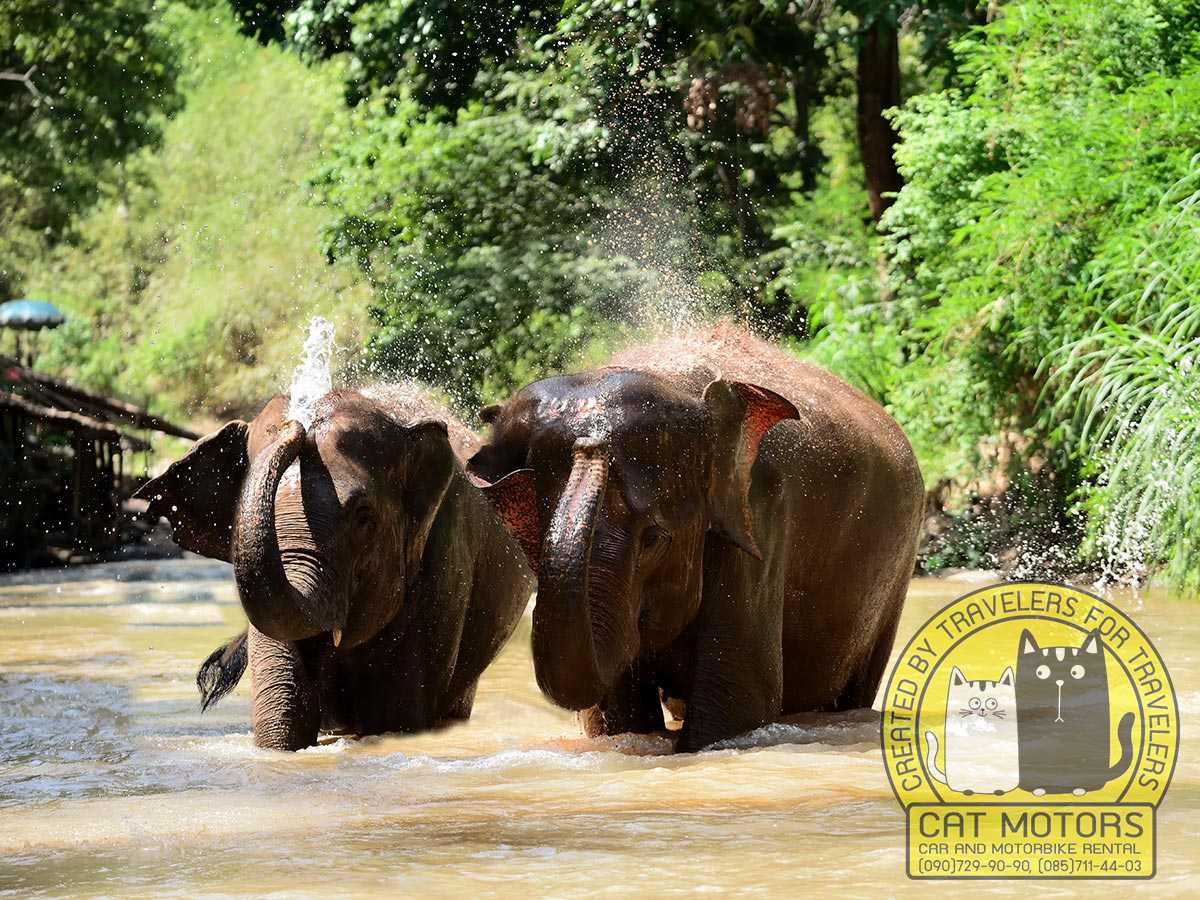
Interaction with elephants can be as extensive as campers see fit. Some elephants allow you to ride them, while others will enable you to swim in the ponds. In addition to the elephants, the camp is also known for its hikes and treks through the grounds, which can last for hours and end at the observation deck. Hikes require appropriate footwear, and it is advisable to go with a guide. Although you can do without one, it is always best to have someone with you who knows the local area.
The locals at the camp cook authentic Thai food for visitors and are famous for their culinary knowledge. Mae Wang Elephant Camp is an elephant sanctuary in Mae Wang National Park, home to over a hundred Asian elephants. Tourists especially enjoy bathing the elephants, taking them around the reserve, and feeding the elephants their favorite edible plants.
Bamboo Rafting
One of the activities on the Mae Wang Loop is rafting, carried out on the Mae Wang River of the same name. Rafting in this world is different because the rafts are made of bamboo, not rubber. The bamboo rafts give the whole experience an authentic and very natural feel. Rafting can be done with or without a guide, but it is recommended to raft with a guide for safety reasons.

During the tourist season, this place gets crowded, so make reservations before you go. Each raft can be booked for about 500 baht, and each can take three people plus a guide.
Trekking
As with most national parks and forested areas of mountainous Northern Thailand, the Mae Wang Loop also has a lot of treks and trails around it, with most of these trails including the waterfalls that the national park houses within its area limits.
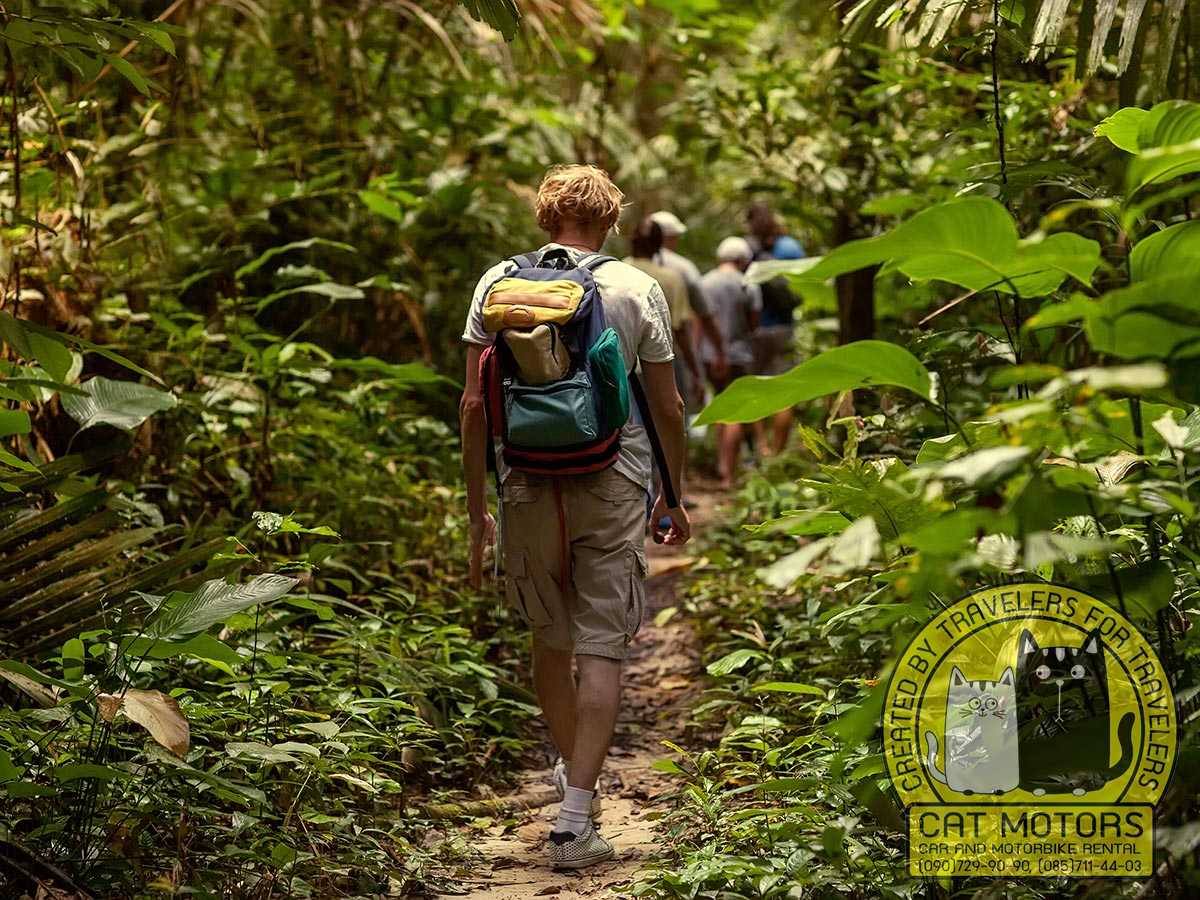
The Northern parts of Thailand are known for Karen hill-tribe villages and their culture. Treks pose an excellent opportunity for the traveler to interact with the original Thai people and understand how their lives are led. Along many trails, it is to see a lot of wildlife, most commonly elephants.
It is important to be appropriately dressed for these treks, and it is essential to have suitable footwear. Thailand is a tropical country, and you must ensure that all your needs are taken care of before getting started on any of these trails. Another important thing is to have a local guide’s help because getting lost in these parts of Thailand is straightforward.
You can make this route part of the Mae Hong Son Loop journey.
Wat Doi Sapphanyu
Wat Doi Sapphanyu is a Buddhist temple nestled in the center of a heavily forested part of Northern Thailand. This temple is known for its epic architecture and beautiful views from the observation deck.
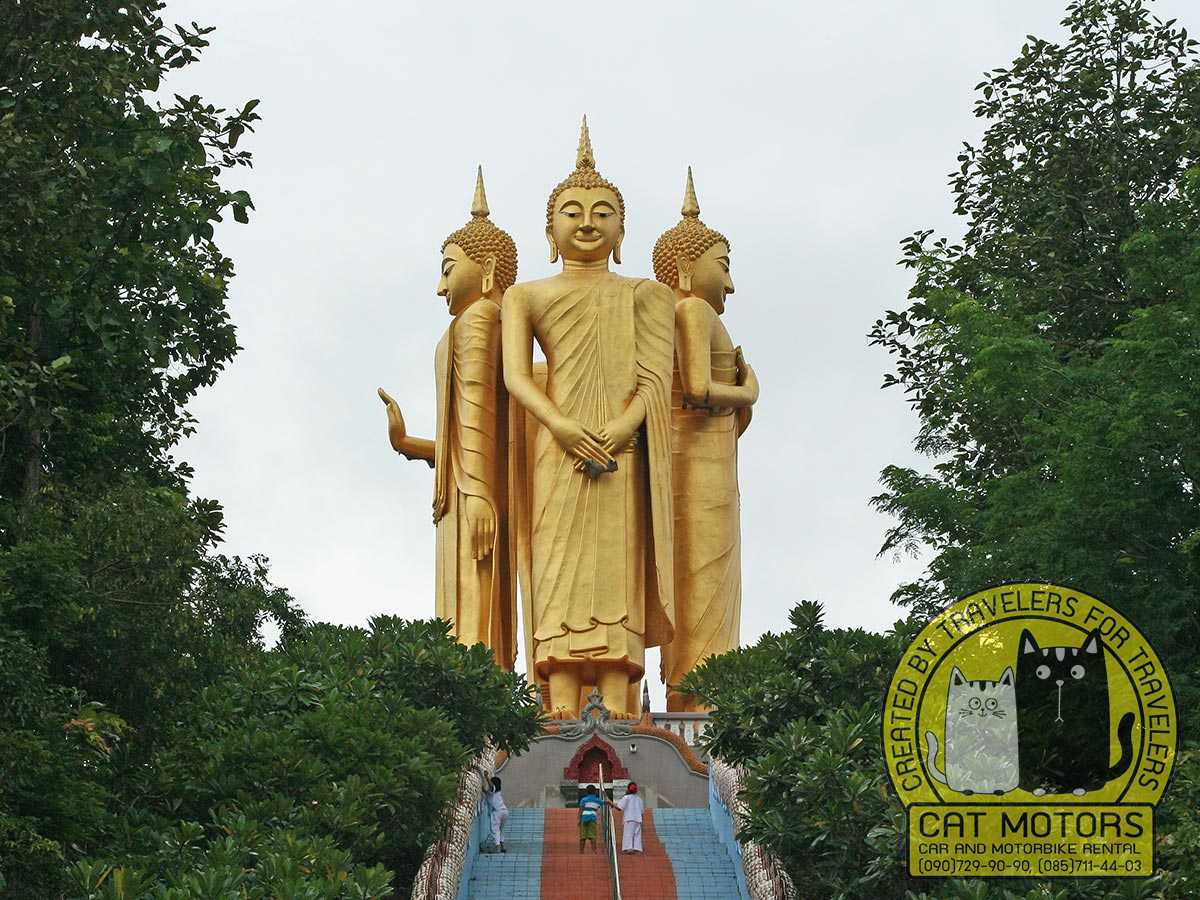
It used to be the abandoned temple of Bo Tib (Nam Bo Thip). In 1994, Phra Ratcharat Rattanakorn, former abbot of Wat Phra That Doi Suthep, and several others teamed up to restore this abandoned temple and make it functional again.
The unique four-directional standing Buddha is a must-see if you find yourself in the area. A staircase leads to the top, but tourists can also reach it by car or motorcycle.
If you are planning to spend a few days in the north of Thailand and have not yet decided what attractions you want to see, then pay attention to our online travel guide What to see in Chiang Mai.
Weather Forecast
Quick Facts About Mae Wang
Basic Information about Mae Wang:
- Location: Northern Thailand, part of Chiang Mai province.
- Geographical Features: Known for its natural beauty, including the Mae Wang River and surrounding mountains.
- Local Significance: Popular for eco-tourism and outdoor activities.
Geography and Environment:
- Landscape: Mountainous terrain with lush forests and a significant river system.
- Climate: Tropical, with a rainy season and a dry season.
Economy:
- Main Economic Activities: Agriculture (especially rice and fruit farming), eco-tourism, and local handicrafts.
- Notable Local Products: Traditional textiles, artisan crafts.
Culture and Community:
- Population Composition: Mix of ethnic groups, including hill tribes like the Karen.
- Cultural Practices: Traditional farming methods, local festivals, and crafts.
- Languages Spoken: Thai, various hill tribe languages.
Tourism and Recreation:
- Key Attractions: Mae Wang National Park, Mae Wang River, Doi Inthanon (Thailand’s highest peak), picturesque Pha Chor Canyon, elephant sanctuaries, rafting and trekking opportunities.
- Accommodation Options: Eco-lodges, local homestays, small guesthouses. We recommend the Karen Eco Lodge.
- Local Festivals and Events: Cultural events related to local tribes, nature-based festivals.
Transportation and Access:
- Access Routes: Mainly accessed from Chiang Mai via road.
- Local Transportation: Limited; primarily local shuttles, rental bikes, rental cars, or guided tours.
Education and Local Institutions:
- Schools and Education Centers: Small local schools, possibly some community education initiatives focused on eco-tourism.
- Local Governance: Under the jurisdiction of Chiang Mai provincial authorities.
Healthcare and Services:
- Local Healthcare Facilities: Small clinics or health centers, with more comprehensive medical services available in Chiang Mai.
Local Economy and Markets:
- Markets and Shopping: Local markets with fresh produce, handicrafts, and traditional goods.
- Business Landscape: Dominated by small, family-run businesses and eco-tourism operators.
Environmental and Conservation Efforts:
- Conservation Initiatives: Focus on preserving natural habitats, sustainable tourism practices.
- Community Involvement: Local communities often involved in conservation and sustainable development efforts.
Video Review
Welcome To Mae Wang
Elephant enjoy Mae Wang river bathing
Bamboo Rafting at Mae Wang
FAQ
Mae Wang is known for its stunning natural scenery, including waterfalls, caves, and hiking trails. It is also known for its vibrant hill-tribe culture, with many of the villages in the area still retaining their traditional customs and beliefs. In addition, Mae Wang is known for its sakura (cherry blossom) blooming season, its hot springs, and its abundance of wildlife.
Absolutely! Mae Wang is a beautiful destination that offers a variety of activities and attractions for visitors. Whether you’re looking for a relaxing getaway or an adventurous exploration, Mae Wang has something for everyone. From its stunning natural scenery to its vibrant hill-tribe culture, Mae Wang is definitely worth a visit.
Mae Wang is located approximately 60 kilometers (37 miles) northwest of Chiang Mai. The drive takes about 1.5 hours, depending on traffic.
The rainy season in Mae Wang usually runs from May to September. During this time, the area experiences heavy rain and strong winds, so it’s best to plan your visit outside of this period.
The hot season in Mae Wang usually runs from March to May. During this time, temperatures can reach up to 40°C (104°F), so it’s best to plan your visit outside of this period.
The best time to visit Mae Wang is from late December to early February, when the sakura (cherry blossom) blooms and the weather is cool and pleasant. This is also the best time to enjoy the area’s stunning natural scenery and vibrant hill-tribe culture.
Souvenirs in Mae Wang include traditional handicrafts, such as hand-woven textiles, wood carvings, and pottery. Other popular items include locally grown tea, coffee, and fruits, as well as traditional snacks and sweets. There are also many shops selling traditional clothing, and other souvenirs.
Embark on a thrilling journey through Northern Thailand with our in-depth travel guides. These guides map out the most scenic routes and highlight exciting local attractions. For those ready to start, explore our motorcycle rental in Chiang Mai home page for the best deals. Don’t forget to read our terms and conditions to understand all the rental details. With these resources, you can confidently traverse mountain paths and bustling towns.
Our tips and advice sections offer invaluable insights on safe riding practices, must-visit local spots, and cultural etiquette. These resources ensure that you are well-prepared and knowledgeable about the area, making your journey both safe and enriching.
Cat Motors Team
Was this post useful for you?
You can rate it by clicking on a star
Average rating / 5. Vote count:
No votes so far! Be the first to rate this post.
We are sorry that this post was not useful for you!
Let us improve this post!
Tell us how we can improve this post?
- Author: Krit Sorenser
- Updated: March 26, 2025
- No Comments




